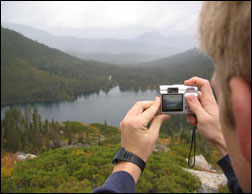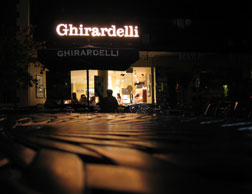
How do you begin to take good photos? Well, the first thing to remember is this: It’s the photographer that takes great photos, not the camera. Think about that for a minute. It’s true isn’t it? I’ve seen some people take great photos with a simple point-and-shoot camera, while some take lousy shots with the most expensive SLR.
Fret not! Read these tips on shooting digital photos and apply them the next time you have a chance. Before long, you’ll be shooting photos like a pro!
1. Know Your Camera Does this sound familiar? You buy the latest digital camera out there, come home, rip off the box, then proceed to fiddle with the device. You briefly flick through the hundred page camera manual and then never look at it again. Not a good idea! If you buy a digital camera, you owe it to yourself to understand its ins and outs. Learn how to control exposure, how to use different camera modes and how to use the flash. The knowledge you gain about the camera will be invaluable when you’re out in the field taking those special photos.
2. Learn to Control the Flash One of the most important things you need to know about digital photography is to control the flash. Personally, I hate to rely on the automatic flash that comes with the digital camera. Depending on the situation, you need to switch off or switch on the flash.

3. Play with the Macro Mode Almost all digital camera these days have a macro mode. This setting is ideal for taking close up shots of objects like flowers or insects. On my Canon PowerShot S500, it’s represented by a flower symbol. What you do is to pick a subject, turn on macro mode, then get as close to it as your camera will allow. Make sure you allow the camera to focus properly before depressing the shutter button fully.
4. Hold the Camera Level A basic rule of photography is to hold the camera level. Since most digital cameras come with a LCD, you can use it to properly frame your shots. Next time you’re taking a shot, try to look for the horizontal lines and use them as guides. A good example is to make use of the horizon when you’re taking a photo of a sunset.
5. Use The Tripod I recommend this tip to all budding photographers – camera tripods are an essential tool in your photography arsenal. When will you need a tripod? Well, it’s useful if you’re taking shots under low-light conditions or trying to capture fast moving objects. I like to use a tripod when taking night shots city streets, for example. Always try to look for a tripod that’s convenient to carry around. For personal use, you don’t need a huge one – just a simple compact one that’s easy to pack.
6. Play with the ISO Setting I find the ISO setting in digital cameras very useful. The ISO setting of a essentially camera controls it’s sensitivity to light. If you’re taking a photo of a still object, like a flower, then always use a low ISO setting. It allows for a longer shutter speed and produces a cleaner image. If you’re shooting a moving object, like a baby playing with a toy, then a higher ISO setting of say 400 would be better. Do take note, however, that a higher ISO setting gives a faster shutter speed and requires less light. This will produce noiser photos.
7. Have Enough Memory Capacity Just like you must have enough rolls of film when using traditional cameras, make sure you always have enough memory capacity in your digital camera. It’s terrible to be on a holiday taking great photos and suddenly realizing you’ve no memory space left. Here are some general guidelines for digital camera storage.
* 2 megapixel cameras – get at least a 64MB card * 3 megapixel camera – get at least a 128MB card * 4 megapixel camera – get at least a 256MB card * 5 megapixel camera and above – get at least a 512MB or 1GB card Conclusion Whew. A pretty long article. I hope I’ve managed to give you some good tips on shooting great digital photos. Always remember what I said – while the latest and greatest digital cameras have amazing features, you still need a skilled photographer to take nice pictures. Apply the above tips to your everyday shooting and learn to be a better photographer.
About the Author
Gary Hendricks runs a hobby site on digital photography. Visit his website at http://www.basic-digital-photography.com for tips and tricks on buying digital cameras, as well as shooting great photos.
Like This Article?
Don't Miss The Next One!
Join over 100,000 photographers of all experience levels who receive our free photography tips and articles to stay current:






hi,
I don’t know when you wrote this article, but if you take a look at the web & search modern cameras, I don’t think that you could found cameras with 2 Mp, 3 Mp, 4 Mp or 5 Mp. The cameras, they are sold today, have sensors with much Mp: 10 Mp, 16 Mp, 20 Mp or 36 Mp ! And therefore memory cards must have more capacity !
Nikon D5100 (2011) sensor=16.2 Mp…Nikon D800 sensor=36.6 Mp both with *.nef & *.jpg
memory card=512 Mp => 20 pictures….same card => 9 pictures
memory card=1 Gb => 41 pictures….same card => 17
memory card=2 Gb => 80 pictures….same card => 35
memory card=16 Gb => 634 pictures….same card => 280
memory card=32 Gb => 1270 pictures….same card => 561
Best regards!